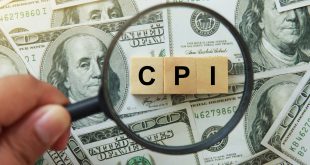The swift rebound in the Dow Jones Industrial Average, the S&P 500, and the Nasdaq Composite on Monday, recovering a significant portion of Friday’s trade-war-induced rout, suggests an all-too-familiar pattern: markets discounting political friction as fleeting drama.
President Donald Trump’s calming words via social media, hinting at a resolution with Chinese President Xi Jinping, were the immediate catalyst, enticing traders to “buy the dip.” This latest move highlights the market’s entrenched belief that high-stakes political rhetoric will ultimately be softened by pragmatic economic necessities. However, this seemingly swift restoration of confidence may be more of a tactical pause than a genuine all-clear signal.
The Illusion of Political Stability
The dramatic $2 trillion market value wipeout on Friday following the threat of “massive tariffs” on China serves as a stark reminder of the underlying fragility. While the subsequent rally retraced over half of those losses, driven largely by a bounce in battered technology stocks like Broadcom and Nvidia, the core geopolitical tension remains unresolved. The initial sell-off was a rational response to an existential threat to global supply chains, particularly impacting tech firms reliant on rare earth minerals from China.
The quick recovery simply implies that investors are betting against the government following through on its most extreme threats. Vice President JD Vance’s remarks about the U.S. holding “far more cards” reinforce the high-stakes, all-or-nothing nature of the negotiation, making the current calm an extremely precarious one. This volatility, driven by single-sentence posts and fleeting comments from government officials, is the new normal, and it fundamentally undermines long-term investment planning.
Multiple Storm Clouds on the Horizon
Even if the trade conflict temporarily recedes, significant domestic headwinds are gathering force. The ongoing government shutdown adds a layer of economic uncertainty, with a crucial payrolls deadline looming that could disrupt federal operations further. Furthermore, the market’s attention is now turning to the upcoming earnings season, with major financial institutions like Citigroup, Goldman Sachs Group, and JPMorgan Chase set to report. These results will offer a concrete look at corporate health amid the swirling political and economic uncertainty, and any disappointing figures could quickly expose the rebound as purely sentiment-driven.
Monetary policy also plays a role. Philadelphia Federal Reserve President Anna Paulson has indicated a willingness to “look through” temporary tariff effects on prices and suggests further interest rate cuts this year, but with a less certain path further out. This indicates that while the central bank is prepared to support the economy, the path to sustained, non-volatile growth is far from guaranteed.
The Necessity of Informed Caution
The market’s enthusiastic bounce back, especially in growth-sensitive sectors, is a testament to the prevailing momentum-driven trading environment. Yet, it would be a mistake to interpret this as evidence of systemic stability.
The core problems—unresolved trade disputes, an unsettled domestic political environment, and an unpredictable earnings season—are all still in play. Investors and traders should adhere to a reasonable level of caution, recognizing that this rally is built on the hope of de-escalation rather than a definitive resolution.
Remaining fully informed on government policy developments, central bank communications from officials like President Paulson, and corporate earnings reports is not just prudent; it is essential for navigating a market that remains hypersensitive to political signals. This environment demands that market participants be highly selective and maintain flexibility, because the line between a market dip and a sustained decline is now thinner than ever.

 Noor Trends News, Technical Analysis, Educational Tools and Recommendations
Noor Trends News, Technical Analysis, Educational Tools and Recommendations




